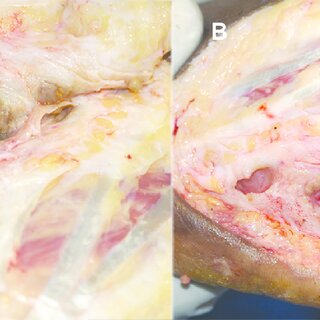January 1995
·
396 Reads
·
105 Citations
Journal of medical and veterinary mycology: bi-monthly publication of the International Society for Human and Animal Mycology
In this prospective study, three types of tissue reaction to mycetoma grains are described. Type I reaction is characterized by the adherence of neutrophils to the surface of the grain leading to its disintegration. In Type II reaction, the fragmented grain and the dead neutrophils are cleared by macrophages and multinucleated giant cells, while in Type III reaction there is a discrete well developed epithelioid granuloma with Langhans's giant cells. The three types of reaction are usually seen in different combinations in the same lesion.









